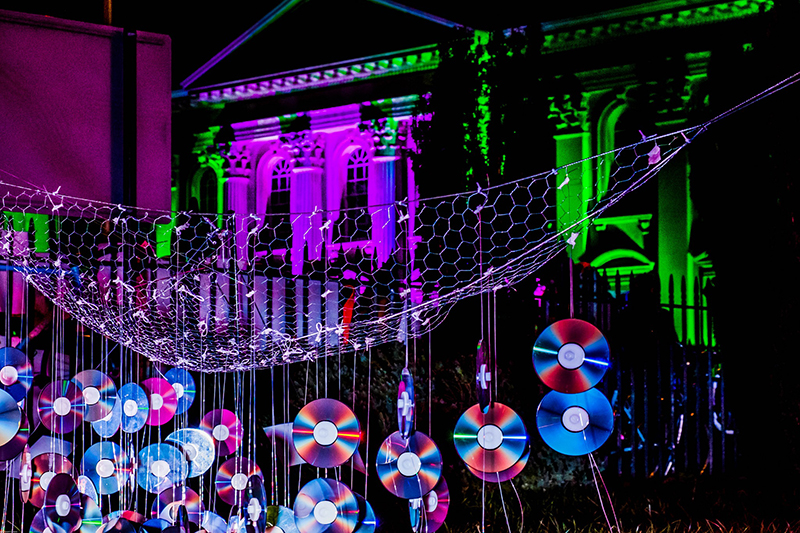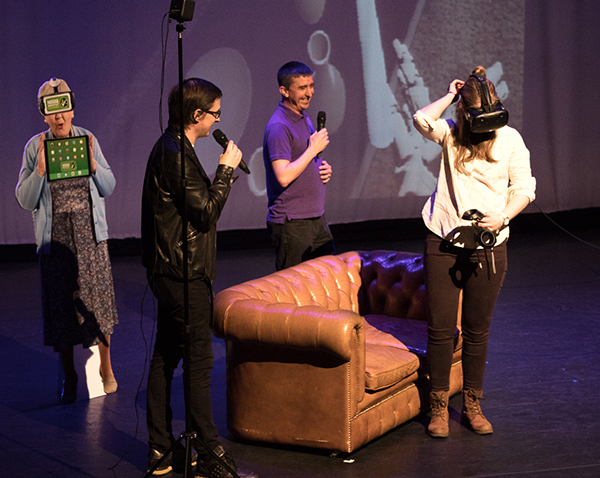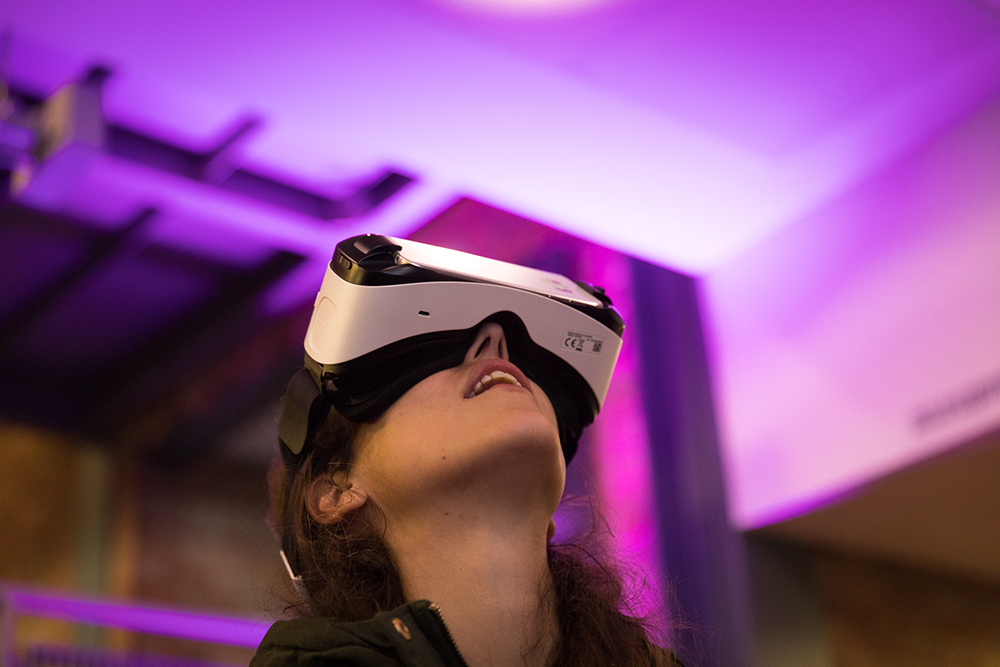Ruthie Collins explores how Cambridge is pushing boundaries at the intersection of art and technology
Cambridge has long been famous for its technology cluster, its so-called Silicon Fen home to a staggering concentration of high-tech businesses and geek giants.
“If you live in Cambridge, you are going to be impacted by technology – whether that’s through work or play,” says Paul Smith, founder of creative industries network, CamCreatives. “Co-working spaces like CambridgeSpace, based in Chesterton, plus initiatives like hackathon, show how we can use technology to achieve goals.”
Major businesses including Bouygues UK leapt at the chance to support e-Luminate, a shining example of art and tech working together in the city. The festival lays on stunning light installations each year, as well as promoting environmentally sound technologies and showcasing advances in light-related technology, research methods and manufacturing.
Bouygues UK’s Samantha Mayo, site co-ordinator for The Triangle Project here in Cambridge, described the event as “a fantastic way to showcase the exceptional architecture of this city in an innovative way”.

Elsewhere, arts organisation Collusion has just launched in_collusion, a two-year, £1 million funded arts programme. Supported by the Arts Council, plus the Greater Cambridge Greater Peterborough Local Enterprise Partnership, the move formalises Cambridge as a centre of excellence for research and development into this art-tech crossover.
Co-founders Rachel Drury and Simon Poulter were drawn to the area for a combination of factors. “We felt there was a distinct opportunity in Cambridge. What can be done here, can’t be done elsewhere,” says Simon. “You have this concentration of academics, talent and surrounding cyber parks, and companies like ARM are in the area – the ARM ‘chip’ that is included in every single android was developed here.”
ARM, of course, grew out of Acorn – whose earliest computers helped launch vintage hit games like Killer Gorilla, Pacman and Chuckie Egg into the world way back in the early 80s. Now a significant haunch of the UK’s gaming industry is based in Cambridge – home to concept artists, as well as one of the UK’s largest independent gaming studios, Jagex.
“Cambridge has been a big player in the UK gaming scene since that scene began,” says Jeremy Thackray from the Centre for Computing History. “As so many popular home computer companies emerged in the area in the 80s, it was only natural that software companies would grow up nearby. Pioneering games like 1984’s Elite, a space-faring exploration game that brought an entire galaxy to life for disbelieving players, were developed by tiny teams of visionary coders in bedrooms and back offices.” Families should head to the museum’s Family Gaming Night in May, or check the website for Easter holiday events (computinghistory.org.uk).

Artists also offer vital scope to critique technology, too. Some of you may have spotted Data Shadow, an innovative installation by Mark Farid that appeared in the city centre in 2015, commissioned by Collusion as part of the Cambridge Festival of Ideas. This startling piece helped raise pertinent questions on human rights, privacy and data – encouraging onlookers to consider just how much of our private information is shared.
The role of data in contemporary culture today is explosive – check out claims that the fun personality quizzes on Facebook mine data that helped sway the outcome of Brexit. “Art is very useful for making the public understand what their data says about them,” said Dr David Stillwell at Collusion’s January data-culture lab. “It doesn’t become personal until it’s their data being displayed in a way that makes them understand what it means about themselves.”
“There’s a real feeling that artists offer huge value”
These artist data-culture labs are part of 80 events planned as part of in_collusion, which offers professional development intensives for artists working in tech-art. There are more planned in May and June this year on virtual and augmented reality, plus artificial intelligence. Practical ways for artists to use technology, such as the Microsoft HoloLens, and ideas discussed at the labs, will be available on the Collusion website.
Many of the United Nations Sustainable Development Goals, such as reducing climate change and inequality, will be explored by the in_collusion programme, plus how technology might impact them. Technology plays a huge role in helping to reduce inequality, allowing “the ever-important issue of technology’s impact on society to be explored in a bold, innovative way,” says Dominic Vergine, head of sustainability and corporate responsibility at ARM. In line with this, artists from January’s lab, including Henry Driver, explored the falsehood of digital imagery in the media and fashion industry and how far these images impact the decisions of real people. Jo Lawrence meanwhile, who is working on a code opera, is looking at the concept of data scientists as puppeteers, manipulating the huge amount of code in our daily lives that we don’t see (eg. on our phones).
“There’s a real feeling that artists offer huge value,” Simon Poulter says. “It’s easy to get lost in the corridors of technology, so it’s interesting to explore other avenues with artists. They think in different ways. Tech companies are attracted by their new forward thinking.’
Collusion are also working collaboratively with artists on research and development projects in Wisbech and King’s Lynn clusters, as well as others, offering a fantastic opportunity for artists and creatives to get involved. Interested practitioners can join the meetup groups in each cluster and drop Collusion a line at [email protected]. For more on in_collusion, visit collusion.org.uk

